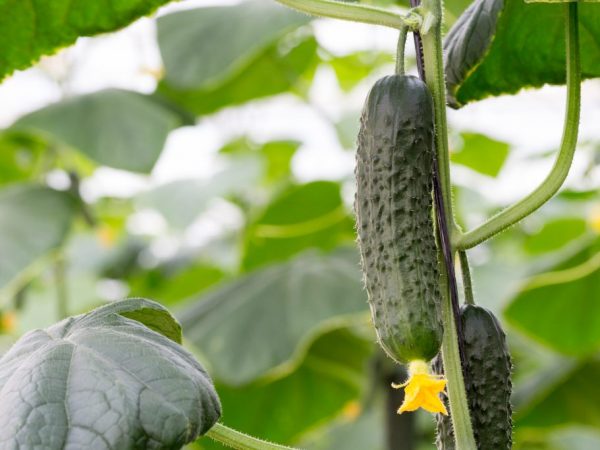Description of the variety of cucumbers Uncle Fedor
Cucumbers are one of the most sought after vegetables in the world. Every year, breeders bring out several dozen different varieties, most of which occupy leading positions in the world market. Just a few years ago, the Uncle Fedor variety of cucumbers appeared.

Description of the variety of cucumbers Uncle Fedor
Characteristics of the variety
Cucumbers Uncle Fedor appeared on the vegetable market relatively recently, in 2008. According to the characteristics, the cultivation of this variety should be carried out in open field conditions, because it is bee-pollinated.
Description of the bush
Uncle Fedor cucumbers belong to varieties with an average ripening period. According to experts, their growing season is about 80 days. Flowering is characterized by a mixed type, but there are more female inflorescences than male ones.
According to the description, the bush has moderate splendor. The length of the main stem is small - 90-100 cm. Flowering occurs by the bouquet method. About 3 ovaries are formed on each lash.
Description of the fetus
Cucumbers Uncle Fedor f1 category have an oval shape. The weight of the fruit is 100 g, the length does not exceed 7 cm. The color is dark, light green fruits are rarely found. Their surface has small thorns covered with white bloom. The pulp of the Uncle Fedor variety is non-watery, rich aroma.
Growing features
To obtain seeds, seedlings are planted. The ideal time is late April or early May. Planting in open ground is carried out when about 4 leaves have appeared on the seedlings. The root system is very demanding - planting is carried out in special containers filled with peat.
In open ground, seedlings are planted in early June. A distance of 40 cm must be observed between rows and plants. Per 1 sq. m have about 3-4 plants. The soil should be warmed up to a temperature of 25 ° C.
Care

The bush must be formed into one stem
No special care requirements are required. It is only important to pay attention to some of the procedures.
- Watering is carried out every 6 days and only with warm water. Cold can provoke a decrease in yield or the occurrence of diseases. People living in dry regions can keep the watering interval up to 2 days. To make the root system feel good, loosen the soil a little after each watering.
- Weeding the soil is carried out, depending on the number of weeds.
- The bush is formed into 1 stem.
The species requires the obligatory formation of a bush. The lower part must be completely free of lateral shoots or inflorescences. If you do not carry out such activities, the yield will greatly decrease.
All overripe fruits are removed from the bush, otherwise they again form ovaries, taking away all the nutrients, as a result, the plant bears worse fruit.
Top dressing is carried out with mineral and organic substances. It is recommended to use phosphorus, nitrogen or potassium as mineral fertilizers. Phosphorus is essential for improving the appearance of the fetus. Potassium helps to reveal the taste, and nitrogen allows the plant to form correctly and gain growth faster.Humus or peat are used as organic matter. These substances contain a large amount of nutrients that have a positive effect on soil and fruiting.
Diseases and parasites
According to the description, Uncle Fedor cucumbers are resistant to most diseases. In particular, powdery mildew does not harm them in any way. Colorado potato beetle or aphids also do not affect the plant.
Only slugs or whitefly are negatively reflected on the bushes. In the fight against slugs, a solution of hot pepper is used; a solution of manganese or copper-containing preparations saves from the whitefly.
Conclusion
Cucumber variety Uncle Fedor does not require special care, has excellent yield indicators and excellent taste. It is these characteristics that are loved by gardeners.


